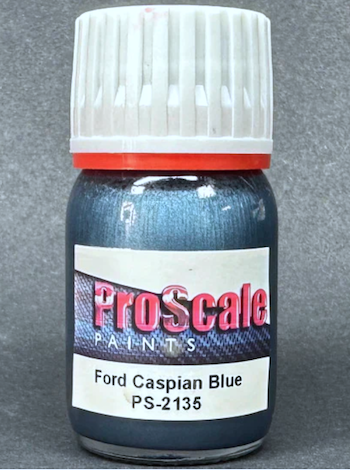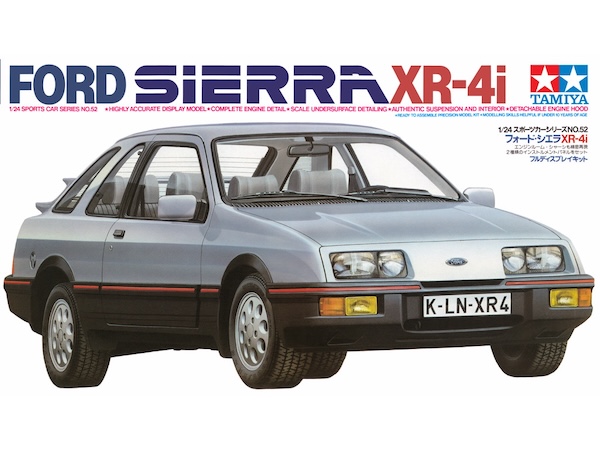
Full Review with Dave Coward
Kit Ref: 24052
Background
The reason for me making this model is as simple as one word – ‘Nostalgia’. I was going through some old photos and I came across as picture of an XR-4i I owned in the early 90’s, that was back when a 20 something year old could actually afford to insure one of these, unlike today.
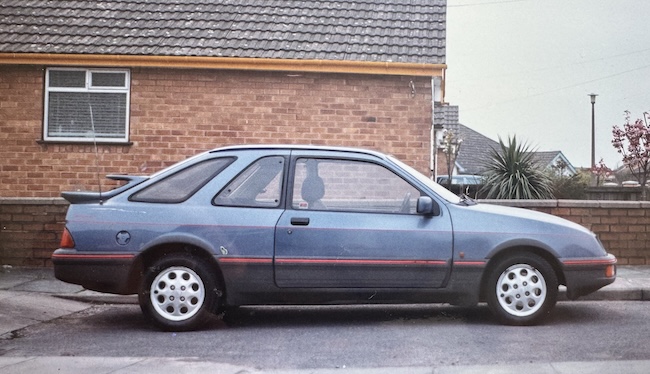
This got me searching the internet to see if a model of one of these cars was ever produced and to my surprise one was, and even more surprisingly it was produced by Tamiya in 1985. On the down side the kit hadn’t been in production for years and getting hold of one wasn’t easy. I kept an eye on the occasional ones that turned up on on-line auction sites but they always sold at stupid prices but I eventually managed to win one at a sensible(ish) price.
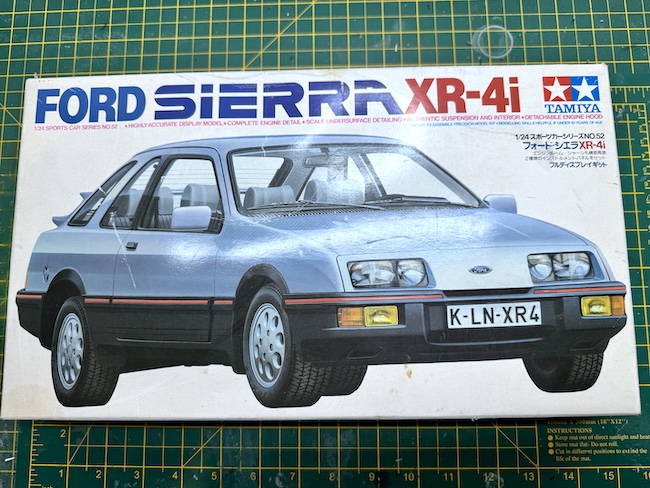
Some info on the XR-4i from the Tamiya instructions:
Since its release of the Model T in 1908, the Ford Motor Company changed the concept of the automobile from a high-grade luxury item to a useful consumer product, and introduced mass production to the world. After its initial success in America Ford extended into Europe in 1911 establishing a Ford subsidiary company in Manchester, Great Britain. ln 1925 Ford went to Berlin, Germany to produce the famous Model T and in 1931 opened up a new factory in Cologne, Germany. By 1961 both the English and German Fords were unified so that the two companies were producing the same product, but with different names. Ford automobiles were known to be tough and rugged vehicles because of their policy of making useful cars for the public, but the European styling tastes differed greatly from those in the U.S.A. The new Ford Sierra, unveiled at the Paris Auto Salon has altered the image of previously produced Ford’s in Europe. With its avant-garde aerodynamic body and subtle curvatures this new car is sure to set the pace for the other manufacturers in Europe. As aerodynamic efficiency also relates to safety and fuel consumption, the Ford company went to work in developing an experimental car, one of which was called “Prove III’ and displayed at the Frankfurt West Germany show in 1981. This car had a remarkable drag coefficient of only 0.22 and was a portent of things to come. Lt’s smooth body and double deck rear spoiler were its big features, and when the Sierra was released in 1982, it was not difficult to see where the styling came from. Developed as a replacement for the best-selling Cortina (English) and Taunus (German), the Sierra is offered with 8 different engine options from 1.3 to 2.8 litres and a wide variety of body styles, including a 5-door hatch- back. The biggest appeal to the Sierra is in its body styling of subtle curves and flush surface. The overall length and width of the Sierra is the same as the Cortina/Taunus, but the interior room space is a little wider, making it more comfortable. The sportiest is the XR4i 3 door hatchback version which is powered by the 2792cc V-6 that produces 150bhp DIN and uses the K-Jetronic fuel injection system. Acceleration is from 0-100km/h in 8.4 seconds and a maximum speed of 210km/h. Using the double spoiler system at the rear reduced drag to a coefficient of 0.32, the best of all the Sierra models. Stabilizers are attached to the front MacPherson struts and rear semi trailing arm suspension systems and progressive rate coil springs are used throughout. Although the Siena XR4i is the sports model, its interior is just as roomy as the other Sierras, and you have the feeling of being in a sports car due to the surround instrument panel and form fitting bucket seats. Ford had previously used the aero- dynamic body stylings in track-racers and true sports cars. This venture into the medium sized car market with futuristic styling has proven popular with the public and is sure to be seen for years to come.
Before I start the build report here’s a look at my finished model…
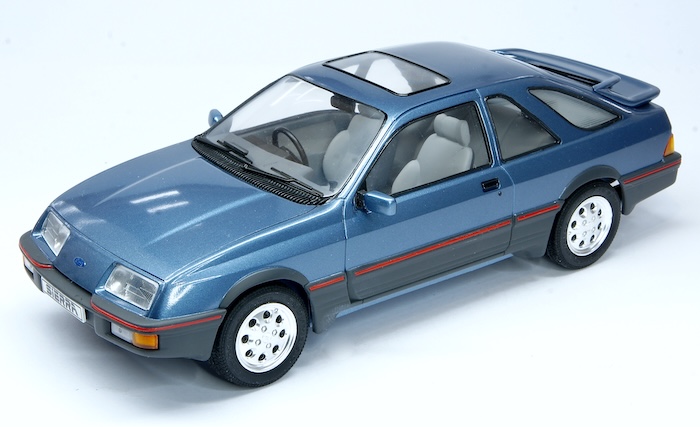
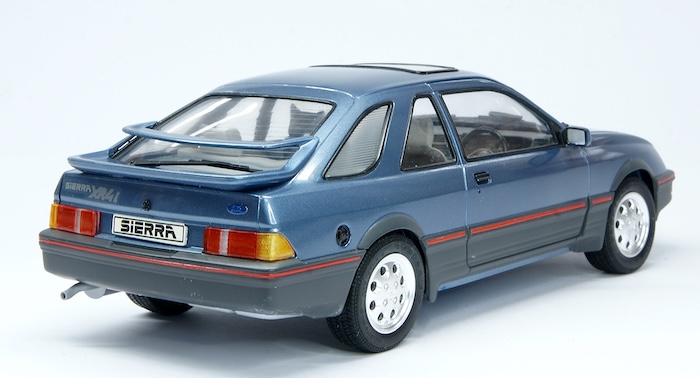
Aftermarket Extras:
Paint – Proscale Paints Ford Caspian Blue
